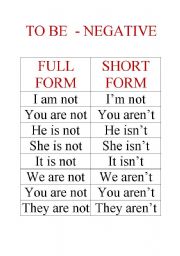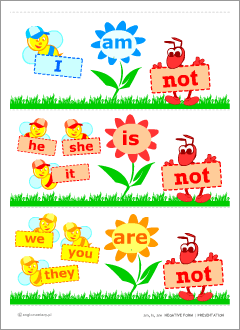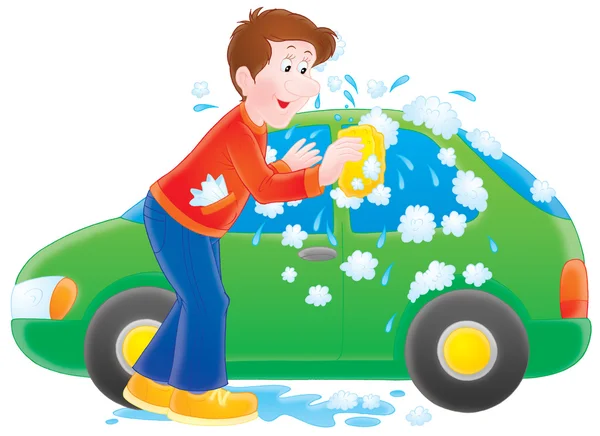We are students of CCH Vallejo. This blog is for the subject of English one, group 182. we will address topics such as: personal information, family members, description of home and belongings in addition to expressing likes and preferences.
miércoles, 14 de noviembre de 2018
lunes, 12 de noviembre de 2018
Present Simple
To conjugate the present simple we use the infinitive for the subjects "I", "you", "we" and "they" and for the third persons "he", "she" and "it" we add an "s" at the end of the verb.
There are certain conditions that say that when you put the auxiliary verb "to be" in the third person do not put the "s" in the main verb. This only happens with the negative and interrogative sentences.
.
Subject Conjugation
I, you, we, and they tlak, eat, learn, do, go
he, she and it talks, eats, learns, does, goes
Examples:
I talk. (yo hablo)
He eats. (él come)
They learn. (ellos aprenden)
Negative sentences
I do not talk. (yo no hablo)
He does not eat. (él no come)
They do not learn. (ellos no aprenden)
Interrogative sentences
Do you talk?. (¿tu hablas?)
Does he eat? (¿el come?)
Do they learn? (¿ellos aprenden?)
Possessive Adjectives
The possessive adjectives help us to give reference to something that pretends someone.
the possessive adjectives are the following:
I = my = mi, mis
You = your = tu, tus / su, sus (de usted)
He = his = su, sus (de él)
She = her = su, sus (de ella)
It = its = su, sus ( de algo)
We = our = nuestro/a/os/as
They = their = su, sus (de ellos/as)
Some examples:
What is your name?
¿Cuál es tu nombre?
Bill washes his car every day.
Bill lava su auto todos los días.
lunes, 5 de noviembre de 2018
VOCABULARY
"CLOTHES"


T-shirt - playera/camiseta
Shirt - camisa
button-down
shirt - camisa
top - top
blouse - blusa
blazer - americana
bodysuit - body
sweatshirt
- sudadera
sweater - suéter
cardigan - cárdigan/chaqueta de punto
tunic- túnica
pants - pantalón
trousers - pantalón
jeans - pantalón vaquero/pantalón de mezclilla
dress pants - pantalón de vestir
suit pants - pantalón de traje
shorts - short
dress - vestido
skirt - falda
miniskirt - minifalda
suit - traje
tie - corbata
wedding dress - vestido de novia
underwear - ropa interior
bra - sostén/sujetador
panties/ panty -calzón/ pantaleta
briefs - calzones/calzoncillos
boxers - calzoncillos/bóxer
tights - medias
pantyhose - medias/pantimedias
socks - calcetines
no-show
socks - calcetines invisibles
pijamas - pijama
camisole - camisola
robe - bata
nightie - camisón
bathing suit/
swimsuit- traje de baño
trunks - bañador
bikini - bikini
sweatshirt - sudadera
hoodie - sudadera con capucha
leggings - mallas
sports bra - sujetador deportivo
coat - abrigo
jacket- chaqueta/chamarra/saco
raincoat - gabardina
bomber
jacket - cazadora bomber
jean jacket
- cazadora vaquera
motorcycle
jacket - cazadora motera
shawl
- chal/rebozo
flip-flops
- chanclas
sandals - sandalias
ballet
flats - bailarinas
flip-flops
- chancletas
sneakers - zapatos deportivos/zapatillas deportivas/tenis
tennis shoes - zapatos deportivos/zapatillas
deportivas/tenis
trainers - zapatos deportivos/zapatillas deportivas/tenis
heles - tacones
flats - zapatos de tacón bajo/flats
boots - botas
ankle boots
- botines
slippers - pantuflas/zapatillas
dress shoes - zapatos de vestir
cap - gorra
hat - gorro
hood - capucha
beret - boina
belt - cinturón
necklace - collar
bracelet - pulsera
watch - reloj
earrings - aretes/pendientes
ring - anillo
gloves - guantes
scarf - bufanda
handkerchief
- pañuelo
leggings - leggings
sunglasses
- gafas/lentes de sol


Vocabulary
"FAMILY"
In this article we will learn the different words and terms to refer to the family. Una de las formas más habituales de aprender el vocabulario relacionado con la familia es a través de un árbol genealógico.
Great-grandmother - Bisabuela
Great-granfather - Bisabuelo
Grandmother - Abuela
Grandfather - Abuelo
Grandparents - Abuelos
Sister-in-law - Cuñada
Brother-in-law - Cuñado
Identical Twins - Gemelos
Twins - Mellizos
Granddaughter - Nieta
Grandson - Nieto
Grandchild - Nieto/a
Girlfriend - Novia
Boyfriend - Novio
Daughter-in-law - Nuera
Son-in-law - Yerno
Parents - Padres
Father - Papá
Mother - Mamá
Son - Hijo
Daughter - Hija
Godfather - Padrino
Cousin - Primo/Prima
Sobrina – Niece
Sobrino – Nephew
Suegra – Mother-in-law
Suegro – Father-in-law
Tía – Aunt
Tío–Uncle



https://blog.openenglish.com/la-familia-en-ingles/
https://trucoslondres.com/familia-ingles-vocabulario/
lunes, 22 de octubre de 2018
Examples verb "to be"
Questions


Questions
- Is that your dog? (¿Ese es tu perro?)
- Is your mother a nurse? (¿Tu mamá es una enfermera?)
- Are they your cousins? (¿Ellos son tus primos?)
- Is he your boyfriend? (¿Él es tu novio?)
- Is this your favourite song? (¿Esta es tu canción favorita?)
- Are we in the park? (¿Estamos en el parque?)
- Are you the best in your classroom? (¿Eres el mejor en tu salón?)

Examples verb "to be"
Negative


Negative
- He isn’t a lawyer. (Él no es un abogado).
- Today isn’t Monday. (Hoy no es lunes).
- He and Mary aren’t good students. (Él y Mary no son buenos estudiantes).
- You aren’t old friends. (Ustedes no son viejos amigos).
- He isn’t in Europe. (Él no está en Europa).
- She isn’t angry. (Ella no esta enojada).
- He and she aren’t cousins. (Él y ella no son primos).
- You aren’t very serious. (Tú no eres muy serio).
- Both cousins aren’t tall. (Ambos primos no son altos).


jueves, 30 de agosto de 2018
Examples of verb "to be"
Afirmative
- I am a good student. (Yo soy un buen estudiante).
- You are very serious. (Tú eres muy serio).
- She is absent from class today. (Ella no está en clase hoy).
- He is a lawyer. (Él es un abogado).
- It is a sunny day. (Es un día soleado).
- We are old friends. (Nosotros somos viejos amigos).
- They are friends. (Ellos son amigos).
- He and Mary are good students. (Él y Mary son buenos estudiantes).
martes, 28 de agosto de 2018
Nationalities
In the past classes we saw the issue of nationalities.
For this topic we met and practiced some of the most famous countries, as well as some customs of each country.
1.- Scotland- Escocia
- Viking Fire Festival
2.-England- Inglaterra
- Harvest Festival
3.-Argentina- Argentina
- Tango
4.-Egypt- Egipto
- Pyramids
5.-Spain- España
- Torero
The verb "to be"
In the last class the teacher explained the structure of verb to be in present.To begin the verb to be means "ser" or "estar". We use to be in present to talk about names, professions, nationalities, age, feelings. The forms of the verb to be are: am, is, are.
The structure of the verb to be in the following:
Subject + Verb to be + Complement
(am, is, are)

jueves, 9 de agosto de 2018

We are students of CCH VALLEJO. This blog is for English class 1, group 182. We will address topics such as: personal information, family members, description of home and belongings in addition to expressing likes and preferences.
In this first blog, we will start giving personal information about us.
We are the great ones of the 182 😎
We are repeating the matter because the first semester teacher hated us, and she prefered to go with her dog to the school parking lot. 😭
Suscribirse a:
Comentarios (Atom)





